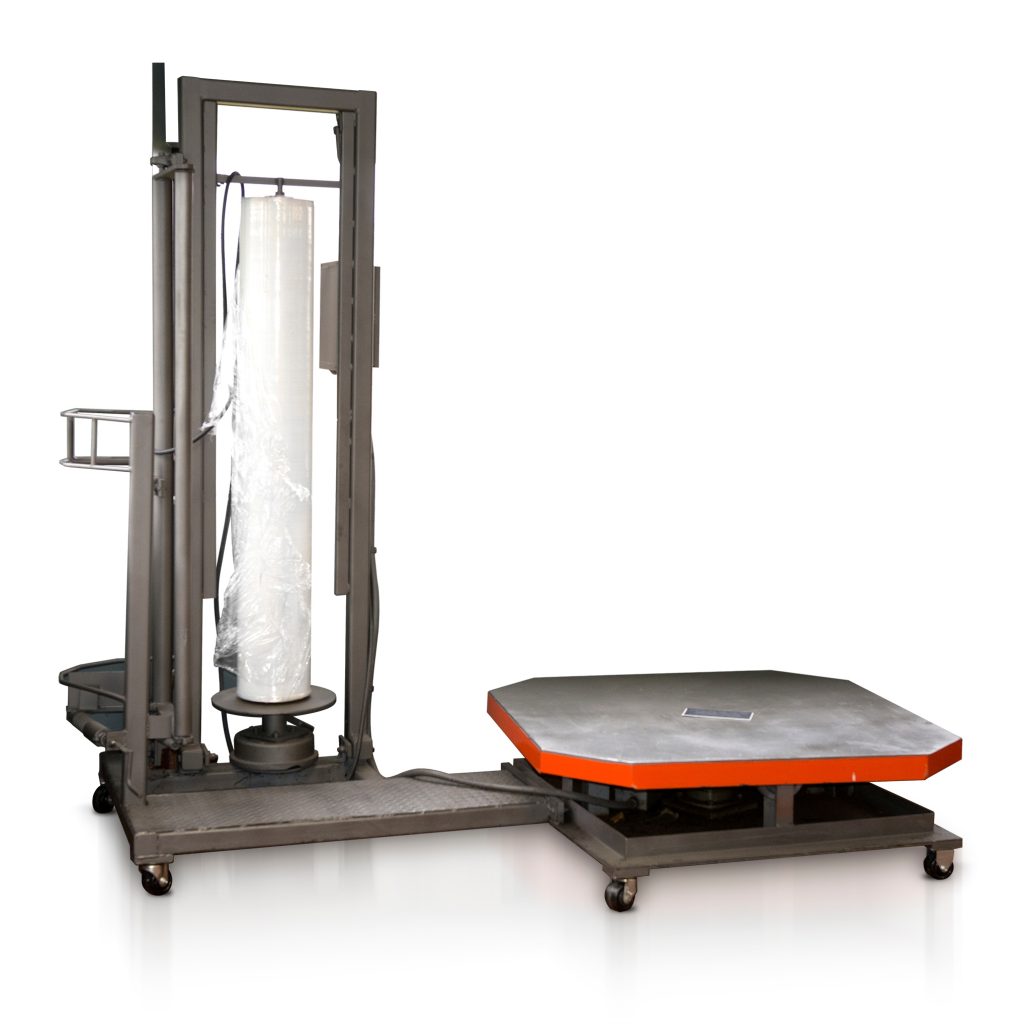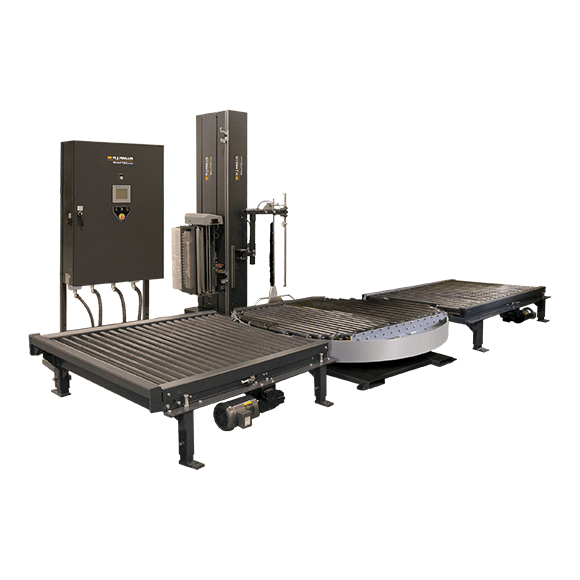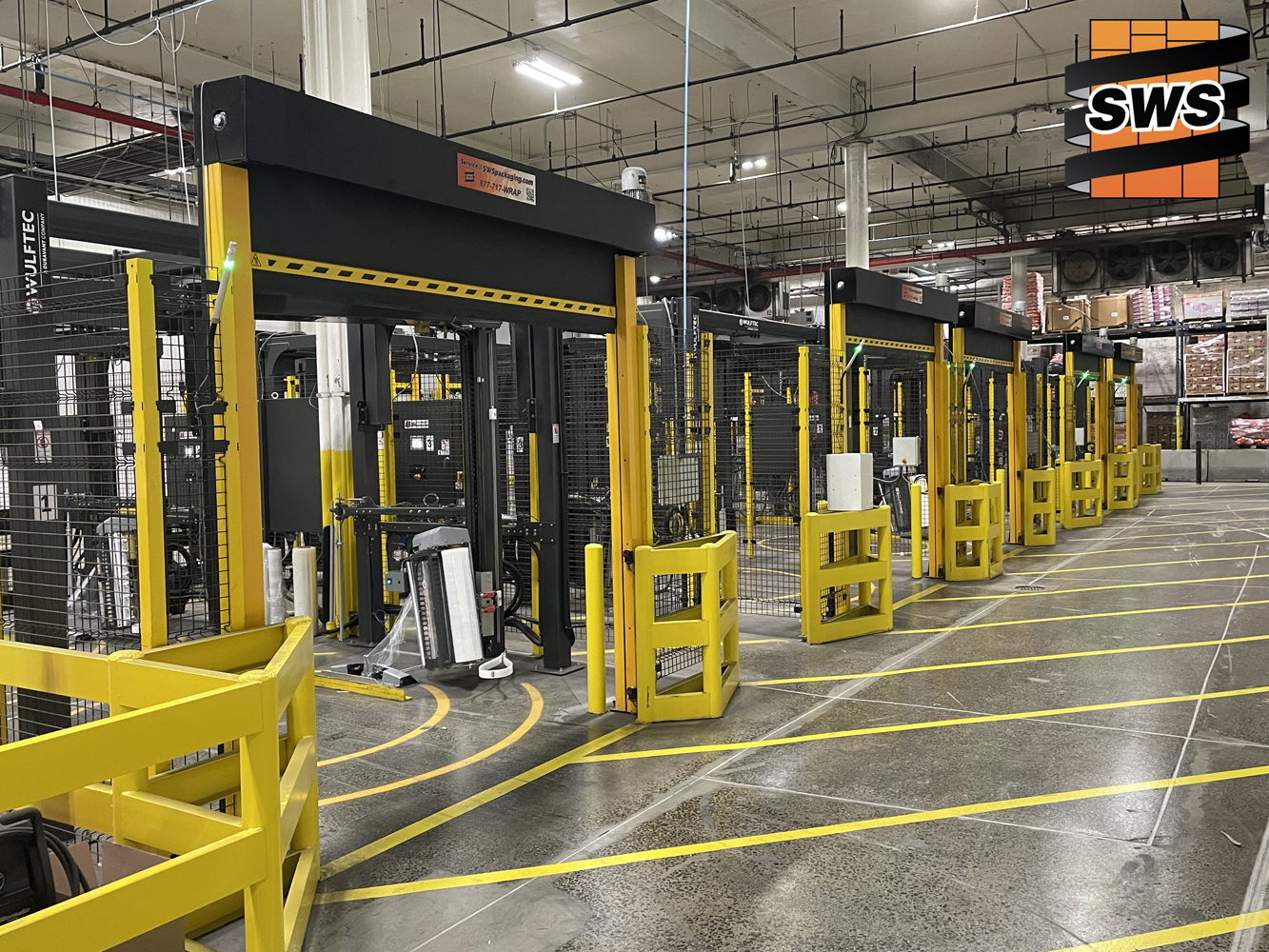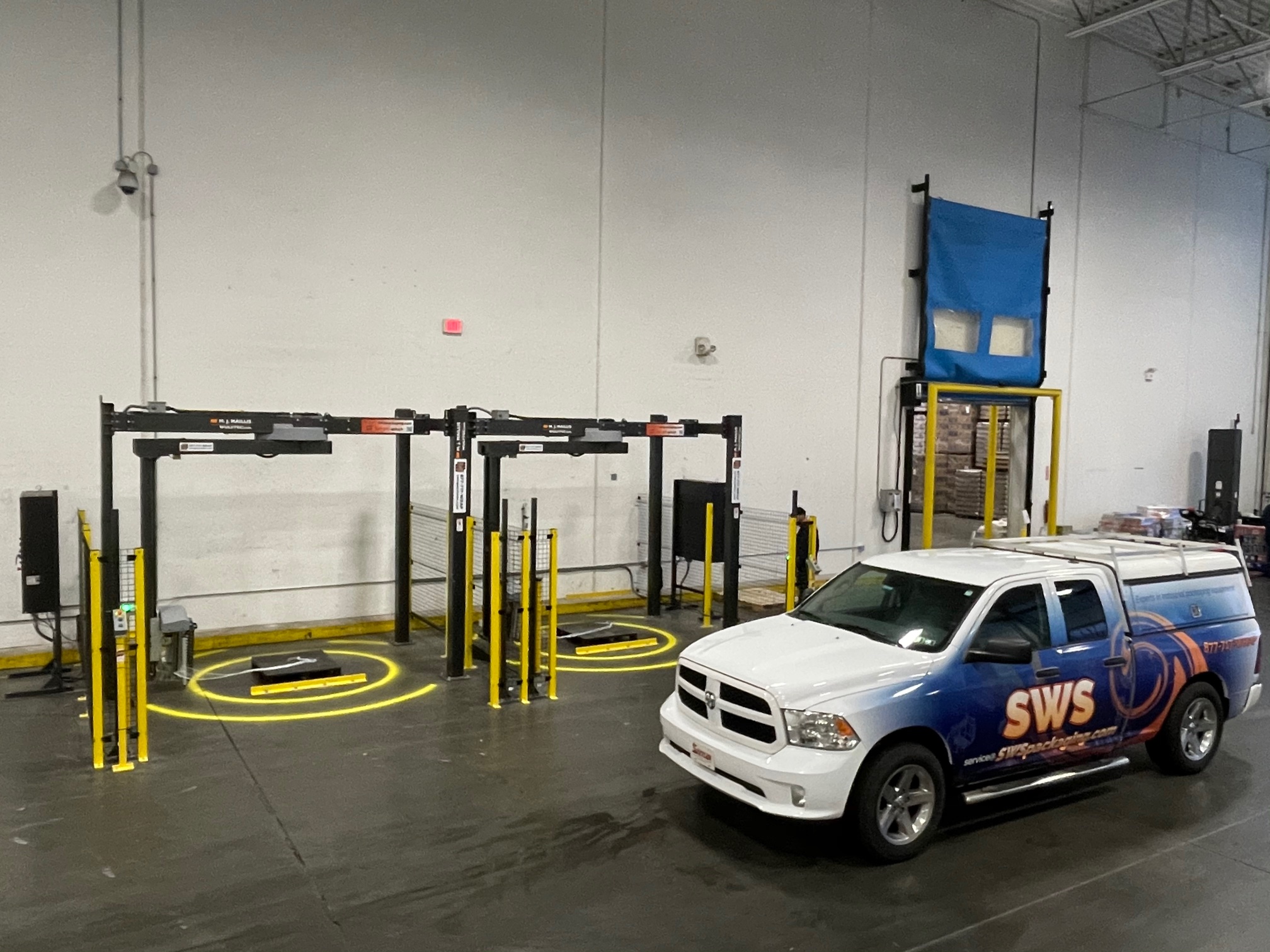Pallet wrapping systems, also known as stretch wrapping systems, have been used for decades to secure and protect packaged goods during storage and transportation. These systems use stretch film, a stretchable plastic material, to tightly wrap pallets of products, providing stability and protection from dust, moisture, and other environmental factors.
The history of pallet wrapping systems can be traced back to the 1950s, when the first stretch wrapping machines were developed. These early machines were primarily manual, requiring operators to manually wrap the stretch film around the pallet. In the 1970s and 1980s, semi-automatic machines were introduced, which used a powered pre-stretch mechanism to stretch the film before it was applied to the pallet. This allowed for more consistent and efficient wrapping, but still required manual labor.

In the 1990s, fully automatic pallet wrapping systems were developed, which eliminated the need for manual labor and increased efficiency even further. These systems use sensors and advanced controls to automatically adjust the film tension and wrapping patterns, providing a more secure wrap with less film waste. Some of the major manufacturers of these systems include Lantech and Wulftec, who are known for their high-quality, durable equipment and their commitment to innovation.
Pallet wrapping systems are used in a wide range of industries, including manufacturing, distribution, and logistics. They are particularly useful for securing and protecting packaged goods during storage and transportation, helping to prevent damage and loss. They are also used to improve load stability and to make it easier to handle and move pallets.

There are many benefits to using an automatic stretch wrapping system over manually wrapping pallets. One of the main benefits is increased efficiency and productivity. Automatic systems can wrap a pallet in a fraction of the time it takes to manually wrap it, allowing for more pallets to be wrapped in a given period of time. Additionally, automatic systems are less prone to human error, which can lead to inconsistent or ineffective wrapping.
Another benefit of automatic pallet wrapping systems is that they use less stretch film than manual wrapping. This is because automatic systems can apply the film more tightly and consistently, with fewer wrinkles or gaps. This not only reduces film waste but also helps to protect the packaged goods from dust, moisture, and other environmental factors.
In addition, automatic pallet wrapping systems are safer than manual wrapping. The manual process of wrapping pallets can be physically demanding and can lead to repetitive motion injuries such as strains and sprains. Automatic systems eliminate the need for manual labor and can help to reduce the risk of injuries.
Finally, automatic pallet wrapping systems are more versatile than manual wrapping. They can be programmed to wrap pallets in different patterns and with different film tensions, depending on the specific needs of the packaged goods. This allows for more effective and secure wrapping, and can help to protect the packaged goods from damage during storage and transportation.
In conclusion, pallet wrapping systems have come a long way since their invention in the 1950s. Today, automatic pallet wrapping systems like those manufactured by Lantech and Wulftec, are widely used in various industries to secure and protect packaged goods during storage and transportation. These systems provide many benefits over manual wrapping, including increased efficiency, less film waste, improved safety, and versatile wrapping patterns. With continuous innovation and technology advancements, we can expect even more advanced and efficient pallet wrapping systems in the future.










